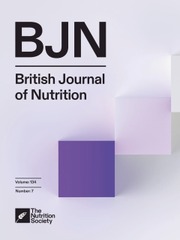No CrossRef data available.
Article contents
Creatine supplementation for treating symptoms of depression: a systematic review and meta-analysis
Published online by Cambridge University Press: 05 November 2025
Abstract
Nutraceuticals are increasingly of interest in nutritional psychiatry, where creatine has been investigated in several randomised trials for its effects on depressive symptoms. However, these findings have not yet been systematically synthesised. We conducted a systematic review to assess the effects of creatine supplementation on symptoms of depression. Four databases were searched up to February 2025 for trials comparing creatine with placebo in individuals with or without depression. Study selection, data extraction and risk of bias assessment (RoB 2) were conducted independently, and certainty of evidence was evaluated using Grading of Recommendations, Assessment, Development and Evaluation (GRADE). Random-effects meta-analyses with Hartung–Knapp–Sidik–Jonkman adjustment including eleven trials (1093 participants) found a standardised mean difference of −0·34 (95 % CI −0·68, −0·00; GRADE: very low quality of evidence), equivalent to 2·2 points on the seventeen-item Hamilton Depression Rating Scale, below the minimal important difference of 3·0 points. CI include non-clinically important effects, and heterogeneity was substantial (I2 = 71·3 %). While effects appeared larger in clinically depressed populations, subgroup analyses and trim-and-fill adjustments indicated substantial bias favouring creatine. Results for secondary endpoints were significant for remission (three trials, OR 3·60; 95 % CI 1·76, 7·56), but not for treatment response (two trials, OR 0·72; 95 % CI 0·28, 1·88). Our findings suggest that creatine may offer a small-to-moderate benefit for individuals with depression, but average effects were not clinically important and the true effect may be trivial or null. The evidence on which these results are based is very uncertain. Larger, more rigorous randomised trials are required to draw definitive conclusions.
Information
- Type
- Systematic Review and Meta-Analysis
- Information
- Copyright
- © The Author(s), 2025. Published by Cambridge University Press on behalf of The Nutrition Society


